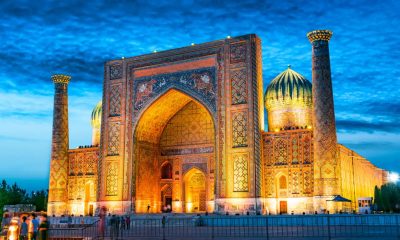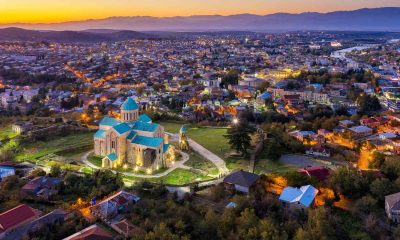Travel
10 Most Beautiful Tourist Attractions In Jordan

Jordan is the ideal Middle East introduction. The safe and welcoming resort brings visitors proximity to world wonders and world-class hospitality. After assimilating into this laid-back nation, you’ll feel at home.
Jordan is full of UNESCO sites. Quseir Amra’s 1,300-year-old desert castle has fading frescos. Wadi Rum’s somber desert beauty offers red sand dunes and crumbling sandstone shadows. Plan to spend two days in Petra, Jordan’s crown jewel. Amazing sites in the ancient Nabatean city will leave you wanting more.
But Jordan’s not stuck in the past. Amman, the hilltop capital, has trendy shops, restaurants, and art galleries. After days of sightseeing, relax at one of the Dead Sea’s luxury waterfront resorts.
Plan your Middle Eastern holiday with our list of Jordan’s greatest tourist sites.
1. Petra
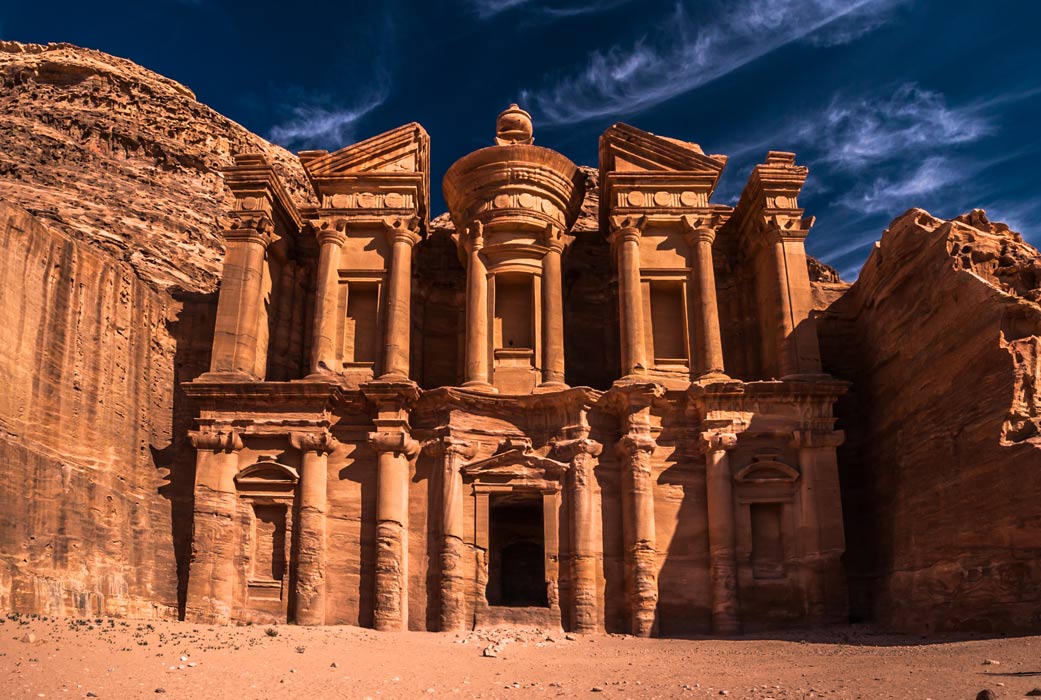
Let Petra astonish you. This New7Wonder of the World has captivated visitors since Swiss explorer Jean Louis Burckhardt rediscovered the vanished metropolis over 200 years ago.
Petra’s 800+ sites require at least two days to see. However, spending more time here won’t disappoint. Exploring a historical city in such good condition is unique.
Tourists are impressed quickly by Petra. Following the entryway are the Djinn Blocks, massive stone monuments whose purpose is unknown, and the Obelisk Tomb. Just a taste of the amazing sites ahead.
If you thought Petra was amazing during the day, wait until night. Attend Petra By Night to view the Siq and Treasury lighted by over 1,500 candles.
2. Dead Sea
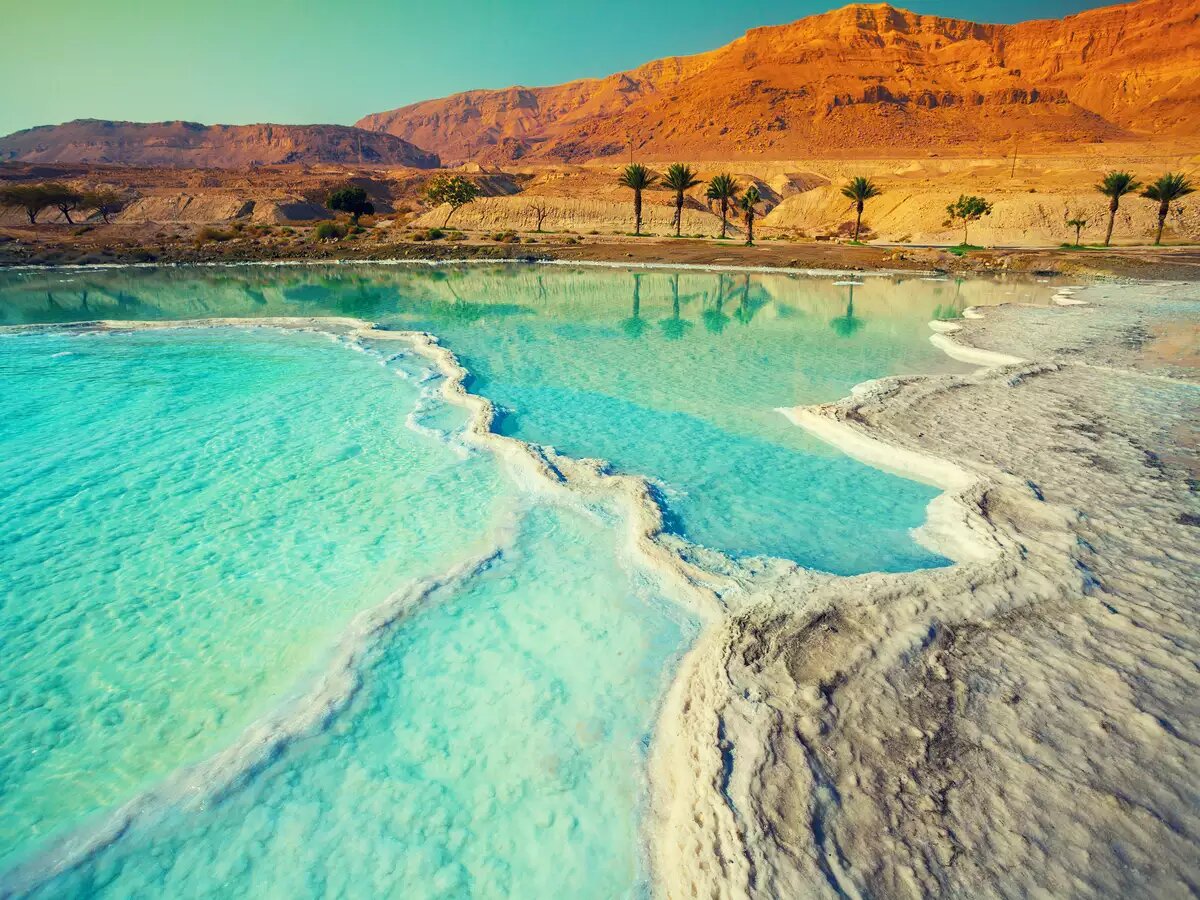
In Jordan, floating in the Dead Sea is vital. At 418 meters below sea level, this body of water is the lowest accessible by road. When viewed against salt-encrusted rock ledges and bleak red mountains, it sparkles blue. Driving from Amman takes roughly an hour to Dead Sea attractions.
Dead Sea water is famous for its minerals. Wellness enthusiasts say the water heals skin. The Dead Sea is too dense and salty to swim laps in, so you can only float.
Both Amman Beach and other locations offer Dead Sea access. Try one of the Dead Sea’s luxurious treatment resorts on the northeast shore. Individual wading places with Dead Sea mud buckets are common. One bath with this red-brown sludge will soften your skin forever.
Hot tip: Never get Dead Sea water in your eyes. The 10 times saltier than ocean salinity hurts worse than you think.
3. Mount Nebo
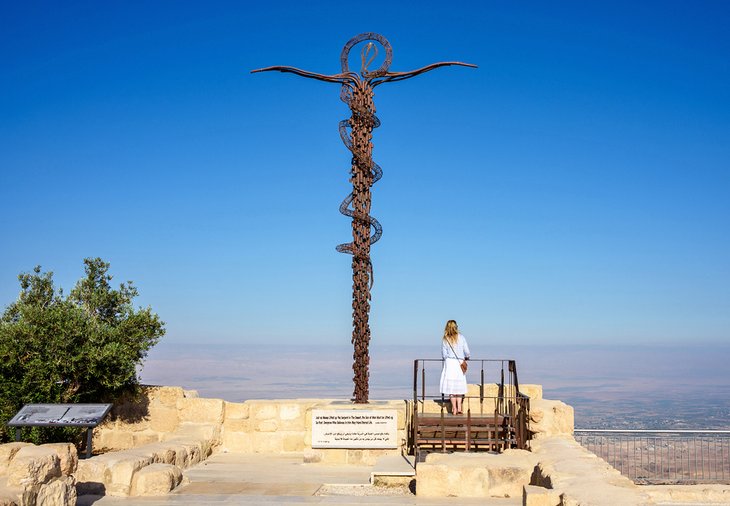
Mount Nebo is Jordan’s crown jewel of Biblical sites. Moses saw the Promised Land before his death on this mountain, according to the Old Testament. It’s a spiritual destination with the country’s best-preserved 6th-century mosaics, a Serpentine Cross, and the Moses Memorial Church.
Memorial Viewpoint, with a modest museum and clear views of the Dead Sea and Jerusalem, is included with your church ticket. For greater quiet and similar views, go downhill from Mount Nebo 100 meters and turn left toward the hilltop. A picnic meal is ideal here.
4. Ancient Mosaics of Madaba
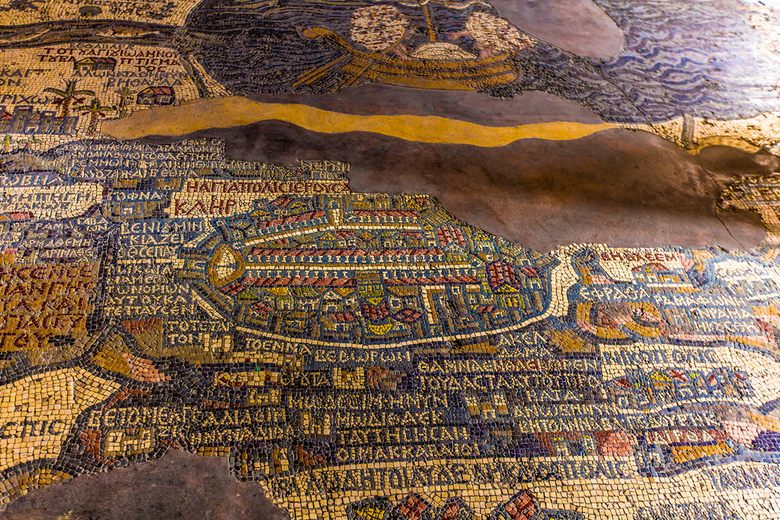
Many tourist locations require you to look up, but not in Madaba, a historic trading city. The city is home to the “largest number of mosaics discovered in their original location in the world,” many of which are located on the floors of churches and structures across the city.
Jordan’s Madaba Mosaic Map located in St. George’s Church, a modest building. Biblical cartography is shown on the 6th-century Byzantine map of the Holy Land. Some of the original two million tiles are missing, but the map nevertheless gives a good idea of the Middle East centuries ago.
Madaba’s two archeological parks have more mosaics. The open-air museum at Archaeological Park I has a beautiful geometric mosaic from the 6th-century Church of the Virgin Mary, found in a cellar in 1887. This site has the oldest mosaic in Jordan, from the 1st century BC, and stunning carpet-like tile work portraying the four seasons and nature from a Byzantine home.
Other remarkable mosaics can be seen at Archaeological Park II, among the ruins of an early 6th-century palace.
5. Ajloun
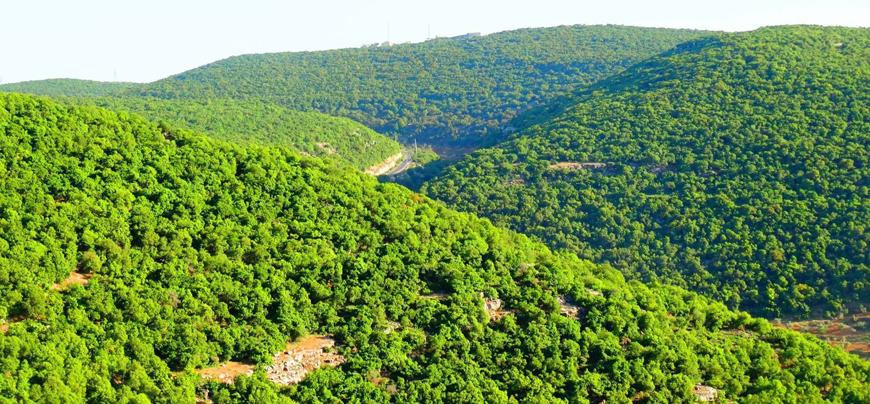
Tourists seeking Jordan’s best natural scenery can visit Ajloun, 20 kilometers northwest of Jerash. Explore the 13-square-kilometer Ajloun Forest Reserve’s magnificent forests by hiking. Wildflowers cover the area in spring, making for great photos. Watch for local crested porcupines and striped hyenas.
Ajloun Castle on Mount Auf should be visited. It was built in the 12th century on the site of an ancient Byzantine monastery to defend against Crusaders. The high site offers panoramic Jordan Valley views.
6. Aqaba
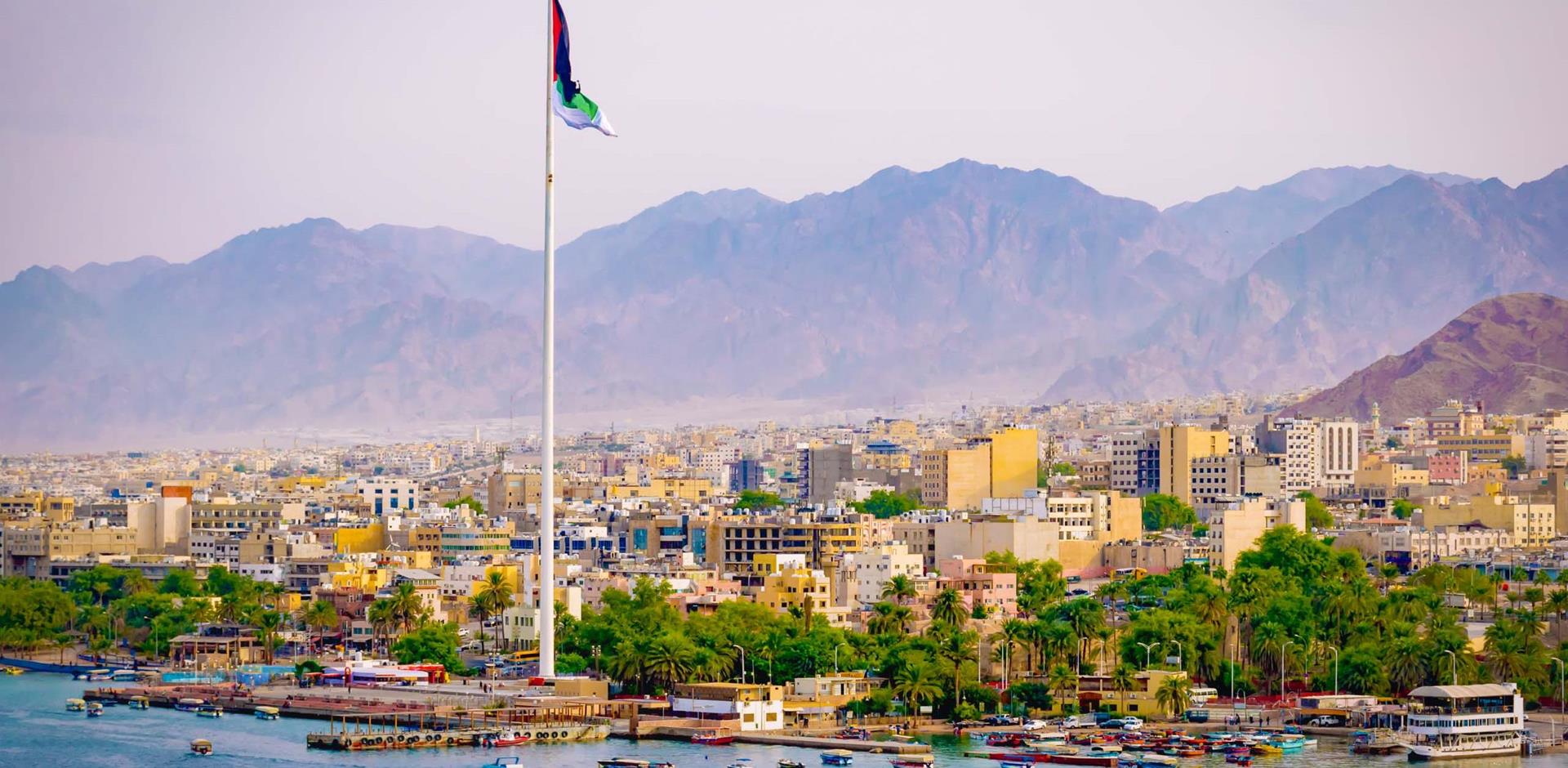
Think you can’t vacation by the sea in the scorching, arid Middle East? Think again. Aqaba, a coastal town on Jordan’s southern point, offers Red Sea vacations.
You can swim, snorkel, dive, and float from Aqaba. Local hotels provide daily cruises on the blue water. A dip in one of Jordan’s beautiful hammams will enhance your beach holiday. If you’re hungry, try Aqaba’s sayadieh, fish on rice with onion, tomato, and chili pepper.
7. Wadi Rum

Visit southern Jordan to see Wadi Rum, one of the world’s most beautiful landscapes. This sandstone and granite rock valley, known as the Valley of the Moon, has towering cliffs, enormous dunes, swirling archways, and caverns. A UNESCO World Heritage Site since 2011, it was the set for much of Lawrence of Arabia.
Outdoor enthusiasts, rejoice: Wadi Rum is becoming an ecotourism destination thanks to the Zalabia Bedouin. Ride camels or Arabian horses, rock climb the sandstone mountains, hike through canyons, or take ATV tours.
The Khazali Canyon has 8th-century BC human and antelope petroglyphs. Ask your tour guide to take you there.
Try “glamping” in Wadi Rum. With nearly little light pollution, the park offers great stargazing. No wonder Wadi Rum is a favorite Jordan visitor destination.
8. Wadi Mujib

Wadi Mujib, Jordan’s answer to America’s Grand Canyon, stretches for approximately 70 kilometers from the Desert Highway to the Dead Sea. The river canyon, which is four kilometers wide and one kilometer deep, allows nature lovers to explore unusual scenery and observe a variety of wildlife, including Egyptian vultures, Nubian ibex, striped hyenas, and Syrian wolves.
If you don’t mind getting a little wet, the Wadi Mujib gorge offers some excellent hiking opportunities. You can also visit the Mujib Reserve Biosphere, which is only an hour and a half from Amman and features lovely hot springs.
9. Roman Ruins in Amman

Archaeological sites in Jordan aren’t limited to Petra. You’ll probably arrive from overseas in Amman, where several amazing ruins are within walking distance.
The famous Amman Citadel is downtown. The Citadel has been occupied since the Bronze Age, according to archeological finds. This is one of the few columns of the Temple of Hercules, a Roman construction that was never finished. Search for the stone sculpture of numerous fingers, part of a 12-meter-tall Hercules statue. It seems this attraction was monumental at its height.
History buffs love Amman’s Roman Theater. Nearly 2,000 years ago, Amman was a Roman city called Philadelphia. The reconstructed amphitheater seats 6,000 people. Event-filled attraction welcomes locals and tourists.
Visit the nearby 500-seat Odeon theater and the Nymphaeum, a Roman fountain erected about the same time as the theater.
Explore Rainbow Street after exploring the ruins to experience modern Amman. Cafés, people-watching, and gift shops abound on the seafront!
10. Desert Castles

Desert Castles dot the Zarqa Governorate from Amman to Saudi Arabia. These early Islamic buildings were built by the Umayyads around 700 CE. Hunting lodges, forts, military citadels, bathhouses, caravan rest stops, and other buildings make up the collection.
Rent a car and drive the Desert Castle Loop to see attractions. Quseir Amra, a squat building with beautiful frescoes; Quseir Hallabat, a Roman fort with volcanic basalt rock and a well-preserved mosaic; Quseir Al-Kharanah, a castle-like structure with dozens of rooms whose original function is unknown; and Azraq Castle, an ancient walled fort where T.E. Lawrence sought shelter in 1917-1918.









